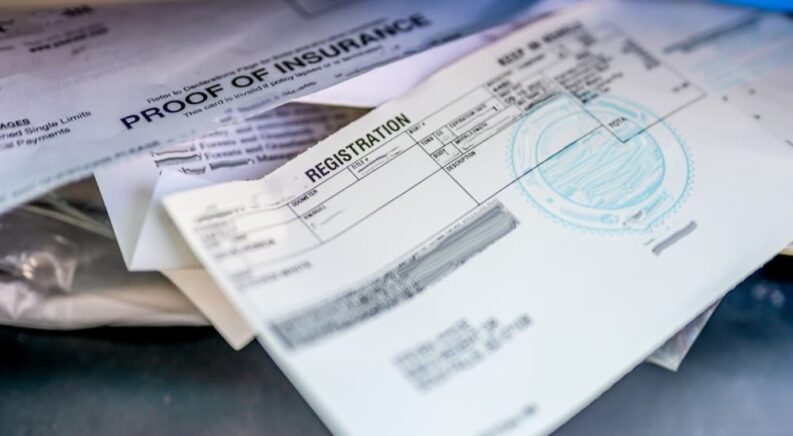Learning to decode a model’s Vehicle Identification Number (VIN) is one of the easiest ways to learn your car, truck, or SUV inside and out. From the year it was made and the manufacturer that produced the vehicle to details on its safety systems and the factory where it originally rolled off the line, there’s no underestimating the importance of a good VIN check. A VIN almost serves as a sort of Social Security number for your vehicle. The entirely unique 17-character code differentiates your ride from every other vehicle on the road. It can be a valuable resource when identifying potential issues, preventing fraud, or setting a good price when reselling your used vehicle on the open market. Familiarizing yourself with the VIN is also essential when it comes time to buy parts or supplies for most maintenance and repair tasks. Narrowing down the specific spark plug, hose, or fluid your vehicle might need to get it back into good working order can be a little intimidating, but by simply punching the VIN into an auto parts store’s website, you can guarantee that you’ll always end up with the right part for the job. Let’s play codebreaker and learn what sort of secrets are lurking in those 17 characters.
Where Is It?
Before learning how to decode your VIN, you first have to know where to find it. Automakers typically display the VIN at several different points around a vehicle, but it varies depending on the specific make and model. The most likely candidate is the driver’s side dashboard, where the VIN is often tucked away in the bottom right corner near the windshield (or the bottom left if you’re sitting inside the car). This tiny VIN plate can be tough to see from inside the vehicle, but should be easy to read from the outside.
If you strike out on the first location, your next option is to open the driver’s side door and look for a rectangular sticker affixed to the jamb. This sticker is known as the Safety Compliance Certification Label, and it contains all sorts of helpful information. The label will contain the VIN, the date of manufacture, and other useful data such as the vehicle’s Gross Vehicle Weight Rating (GVWR). This last statistic is particularly valuable from a safety perspective. It tells you how much weight a vehicle can accommodate, including the passengers, fuel, and any cargo you might be carrying. Failure to heed the GVWR can land you in a sticky situation, particularly when trying to bring the vehicle to a stop.
Many vehicles also have the VIN stamped directly onto the engine block, which is a good way to tell if a vehicle still has its original engine. It can also be found on the title, registration, and any insurance paperwork you might have stashed in your glovebox. There are also a few less likely candidates worth checking if you’re having difficulty finding the VIN, including the front of the frame near the plastic windshield wiper fluid tank, the rear wheel well, and underneath the spare tire. Motorcycles are a little trickier as they lack a lot of usable space where the VIN can be exhibited, but riders should start by checking their bike’s frame neck or any of the paperwork mentioned above.
Decoding the VIN
A VIN may seem like a random jumble of letters and numbers, but it follows a very specific format to convey as much information as it does. Let’s dive into the specifics.
Characters 1 to 3: World Manufacturer Identifier (WMI)
The first three characters in a VIN identify two important pieces of information: the country where the vehicle was manufactured and the brand that produced it. The first character helps to pinpoint the country with either a letter or a number. The numbers 1, 4 and 5 denote a vehicle made in the U.S., while Canada and Mexico are denoted with a 2 or 3, respectively. Countries outside of North America typically use letters instead of numbers, with popular examples including J (Japan), China (L), Germany (W), and Sweden (Y). There are many more countries than there are letters in the alphabet, which is why many employ a range of two-letter codes. A VIN that starts with the letters SA through SM means that the vehicle was manufactured in England, while Korean vehicles use the letters between KL and KR. For a full list of VIN country codes, simply click this link.
The second and third characters tell you something that should be obvious every time you approach your vehicle, but it’s still an important part of the VIN. Every auto manufacturer is given a unique code that immediately follows the country of origin, with popular examples including FA (Ford), HG (Honda), and G (GM). In the example of a Honda vehicle produced by the company’s Japanese division, this code will be preceded by the letter J, but will also carry a different two-letter code (for example, JHM). A full list of manufacturer codes can be found here. Brands also use alphabetic codes to point to vehicle types and country-specific divisions, such as 3VV (a Volkswagen SUV made in Mexico) or 3VW (A VW car made in Mexico). These codes might seem a little cryptic, but once you know the basics, it’s easy to pinpoint exactly where your vehicle was made and who produced it.
Characters 4 to 8: Vehicle Descriptor Section (VDS):
The next five characters are what’s known as the Vehicle Descriptor Section (VDS). These five characters tell you everything you need to know about a vehicle’s body style, engine type, and the specific model and trim. Let’s use one of Honda’s most popular models as an example. If you’re the proud owner of a midsize Accord, the VIN’s fifth character will be a C. If it’s followed by an M, it means you’ve opted for the four-door version instead of the coupe produced until 2020. The number 8 indicates that it’s packing a 2.4L engine, and the next number points to the LX trim level. Some VDS sections will even include another number that’s used to describe the vehicle’s safety features, specifically the airbag and restraint system, though this isn’t always the case.
Character 9: Check Digit
The ninth character in a VIN doesn’t give you any specific information about the car, but it serves an important role in protecting drivers from fraud. This character is known as a check digit, and it’s used to help identify invalid or fraudulent VINs. The process is a little complicated, but shouldn’t be outside of the realm of understanding for the average driver. When creating a VIN, automakers use a mathematical formula to assign a specific number to the ninth spot based on the other 16 characters. When the VIN is punched into a database or VIN decoder, the system uses the same formula to ensure the number matches its calculations. If the algorithm spits out the incorrect number, you could be dealing with a forged VIN that should raise red flags as to the legitimacy of the vehicle. This is why it’s always so important to run a quick VIN check before purchasing a new or used vehicle, as it can help to protect you from driving off the lot in a car that isn’t quite what it seems.
Character 10: Model Year
You would think that determining a vehicle’s model year would be as simple as looking for a four-digit number in the VIN, but things are rarely that easy. Brands switch between numbers and letters every two decades, which means this tenth digit will either be something like a Y for the year 2000 or a 1 for the year 2001. Automakers switched back to letters starting in 2010 (A) and will continue along the alphabetical route until 2030, when they’ll switch back to numbers. This creates some issues when differentiating a 1997 model from a 2027 model, but there should be plenty of clear indications of the 20-year gap in terms of design and features. Drivers should also note that the letters I, O, Q, U, and Z are never used to indicate a model year due to the fact that they could be easily misinterpreted for other numbers and letters when the VIN is transcribed.
Character 11: Assembly Plant
If you really want to pinpoint where your vehicle was made, the VIN’s 11th character is worth a closer look. Automakers typically use a single letter or number to indicate the plant that produced a given model. Since more than one plant may produce a particular model or vehicle class, this character can help narrow down the specifics. For example, Honda’s Marysville, Ohio plant (A) only produces the brand’s Accord sedan, while the East Liberty, Ohio (E) facility is responsible for churning out the Civic and CR-V. The Civic is also made in Honda’s Alliston, Ontario plant (C) and in Greensburg, Indiana (S), where it shares a facility with the Insight.
On the other hand, Ford’s facilities tend to produce a certain class of vehicle, such as pickup trucks in Flint, Michigan (F), SUVs in Arlington, Texas (R), and vans and pickups in Wentzville, Missouri (1). Some of these codes are a little outdated as the Big Blue Oval’s Fremont, California plant (Z) was one of the brand’s biggest West Coast operations until 2010 when Ford turned over the keys to Tesla. In rare cases, different plants under the same brand have different reputations for quality and consistency, so it might be worth doing a deep dive on a VIN if you’re trying to avoid buying a potentially problematic ride.
Characters 12 to 17: Serial Number
The last six numbers in a VIN represent the vehicle’s serial number. This code helps to differentiate your car, truck, or SUV from every other model on the road, and can prove important when trying to identify a lost or stolen vehicle. This unique six-digit number is created for every vehicle as it rolls off the assembly line, with each brand employing its own unique sequence.
Applying the Code
Let’s apply what we’ve learned to help translate a fictional VIN. What can we learn from a vehicle with the VIN 1HGCD5659VA123456? The 1 indicates that the vehicle was made in the U.S., while HG pinpoints Honda as the manufacturer. The letter C differentiates it as an Accord, while the D tells us that it’s a four-door sedan. The 5 is Honda’s code for a 2.2L VTEC engine, the number 6 tells us that the car features front and side airbags, and the second 5 pegs it as the Accord’s LX trim. The 9 is the car’s fraud-detecting check digit, which can be verified through a VIN checking system. The letter V indicates that it’s a 1997 model. The letter A denotes Marysville, Ohio, as the manufacturing plant, and the 123456 is the car’s individual serial number.
Countless online resources can help drivers decode their VINs. While this string of 17 numbers might seem a little overwhelming, it’s certainly worth familiarizing yourself with some of the basics. If you want to learn more about your vehicle’s DNA or ensure that you’re always picking the right part for a repair or maintenance task, the VIN is here to help.





